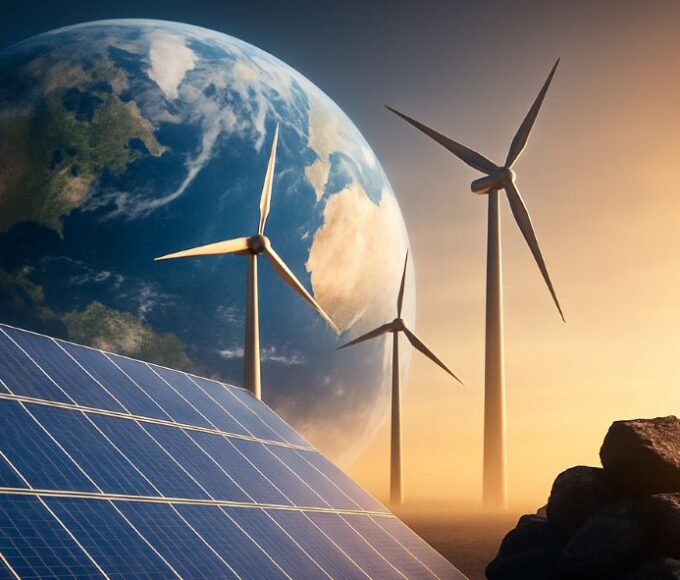Offshore wind projects are seen as a key to decarbonizing the power sector, a new trend in technological development, and have significant development advantages and broad prospects for development. However, some offshore wind projects around the world, especially in Europe and the United States and other countries, have been stalled due to high costs, reduced investment and other factors, and the possibility of realizing the 2030 planning goals continues to diminish. Europe and the United States in the offshore wind power industry planning goals are often more ambitious, but its ability to implement vulnerable to a variety of unfavorable factors.
Offshore Wind Power Projects are Withdrawn or Postponed
Most developed countries in Europe and the United States are rich in offshore wind resources. These countries have a strong demand for electric energy, especially in Europe after the outbreak of the energy crisis in the Russian-Ukrainian conflict, the search for energy autonomy so that it attaches more importance to the development of offshore wind power. But now the development of offshore wind power in Europe and the United States is slowing down, many projects have been withdrawn or postponed.
According to the U.S. Energy Information Administration and the International Energy Agency, a list of offshore wind projects around the world that have been announced as withdrawn or postponed has been compiled. Statistics show that in the year since October 2023, the combined installed capacity of withdrawn or postponed projects amounted to at least 6 million kilowatts. With multiple project cancellations, damage to wind turbines and the abandonment of lease deals over the course of a year, the development of the global offshore wind industry has been hampered, and the chances of Europe, the United States and other countries realizing their planning goals are becoming slimmer and slimmer, and the global effort to combat climate change has suffered a setback.
According to the U.S. National Renewable Energy Laboratory data, the U.S. in 2021 set the goal of realizing 30 gigawatts (1 gigawatt equals 1 million kilowatts) of offshore wind power by 2030, but as of May this year, its operational offshore wind power capacity is less than 200 megawatts (1 megawatt equals 1,000 kilowatts). Europe also performs worryingly, the United Kingdom, Germany and the Netherlands, the major offshore wind power countries by 2030 can only achieve 60% to 70% of the target it set. Belgium, Denmark and Ireland are relatively conservative in their industrial planning, but are also expected to fail to achieve their planning targets.
Mainly, large European and American companies are scaling back their development plans. Statoil has decided to pull out of an offshore wind project it was pushing in France. The company had planned to work with partners in the UK and other countries to build power stations using new “floating” technology. The world’s largest offshore wind producer, Denmark’s Vosux Energy, announced last November that it would withdraw from a large project located off the coast of the United States. The company also decided in February this year to lay off about 800 people and withdraw from the offshore wind power market in three countries, including Norway. US-based GE Vernova, one of the industry’s top wind turbine suppliers, is not accepting new orders. This means that the energy industry’s decarbonization goals have inevitably appeared gap.

Multiple Factors Drag European and American Offshore Wind Power into Trouble
According to the Associated Press reported, the United States northeastern coastal residents and fisheries practitioners of offshore wind power protests have never been interrupted, and in recent months the tower accidents, blade falls and wind farm development suspensions and other accidents, but also the opposition that the United States is the development of offshore wind power is “the wrong decision”.
Opponents of offshore wind power around the United States have filed a series of lawsuits to the court, that the United States offshore wind power “is not reliable”, some proposed to cancel the offshore wind power project has been set, and some hope that in the long process of litigation to let the project shelved not to build. But in the view of offshore wind power supporters, offshore wind power is to combat climate change “tool”, especially after a rigorous environmental assessment and approval process of offshore wind power projects, should be supported by the law.
At the same time, the U.S. offshore wind power is also facing a more severe cost test. Rising costs are the main dilemma facing offshore wind power development. Europe and the United States long-term high inflation, high interest rates and rising labor costs are superimposed, resulting in development costs exceeding expectations. In addition, the new crown epidemic and the Russian-Ukrainian conflict caused by the offshore wind industry supply chain disruption has also brought adverse effects.
Energy research firm Wood Mackenzie offshore wind power research director Soren Larsen said that the current global average cost of offshore wind farms is 230 U.S. dollars per megawatt hour, in the past two years has risen by 30%-40%, is the average cost of onshore wind farms of 75 U.S. dollars per megawatt hour more than three times. The U.S. National Renewable Energy Experimental Laboratory (NREL) published calculations in August this year showed that the cost of U.S. offshore wind power is expected to be $0.125 per kilowatt hour, up about 45% from a year ago. Before an offshore wind project is put into operation, the project operator will negotiate with the government and electricity customers to determine the selling price of electricity based on the development costs. In principle, the selling price is fixed, so a rise in development costs can lead to a deterioration in the project’s profitability expectations.
In the United States, political factors have also constrained the development of its offshore wind power. After Trump took office, the U.S. government may reduce its support for offshore wind power. Reuters also said the industry is concerned that Trump could undermine the renewable energy development process. Germany’s RWE and Siemens Energy, two of the world’s largest renewable energy companies, warned that the U.S. offshore wind industry will face challenges during Trump’s term in office, noting that the technology, which has been slammed by the president-elect, could be delayed.Michael Mueller, RWE’s finance director, said, “In light of the outcome of the U.S. election, we believe that the implementation of offshore wind projects in the U.S. is more risky than ever before and therefore have to expect investment in our projects to be later than originally planned. Christian Bruch, CEO of Siemens Energy, also pointed to possible future problems with offshore licensing in the US and assumed that currently licensed projects would not be affected. Trump has claimed that offshore wind harms wildlife such as birds and whales and drives up electricity prices as a reason for opposing the popularization of offshore wind. The U.S. government may reduce its support for offshore wind after Trump takes office. Rebecca Williams, deputy chief executive of the Global Wind Energy Council’s trade group, acknowledged that there is a risk that the wind industry will not meet its targets, but with targets being set out there is a chance that they will not be met, and with the right policies it is still possible for the industry to meet its targets.
Currently, there are few countries developing offshore wind power. As of 2023, about 80% of the world’s cumulative installed capacity is concentrated in the top three countries – China, the UK and Germany – with China alone accounting for 50% of the total. The gap with China is likely to widen as Europe and the US scale back their development programs. Offshore wind is an important source of electricity for realizing a decarbonized society. The International Renewable Energy Agency (IRENA) calculates that in order to achieve the Paris Agreement’s goal of limiting global warming to 1.5 degrees Celsius, the cumulative installed capacity of global offshore wind power will need to be increased by nearly seven times over the next seven years. The successive scaling back of offshore wind development plans in Europe and the US means that installed capacity growth will come to a standstill. In order to achieve decarbonization targets, other sources of electricity may need to be developed to complement them.












